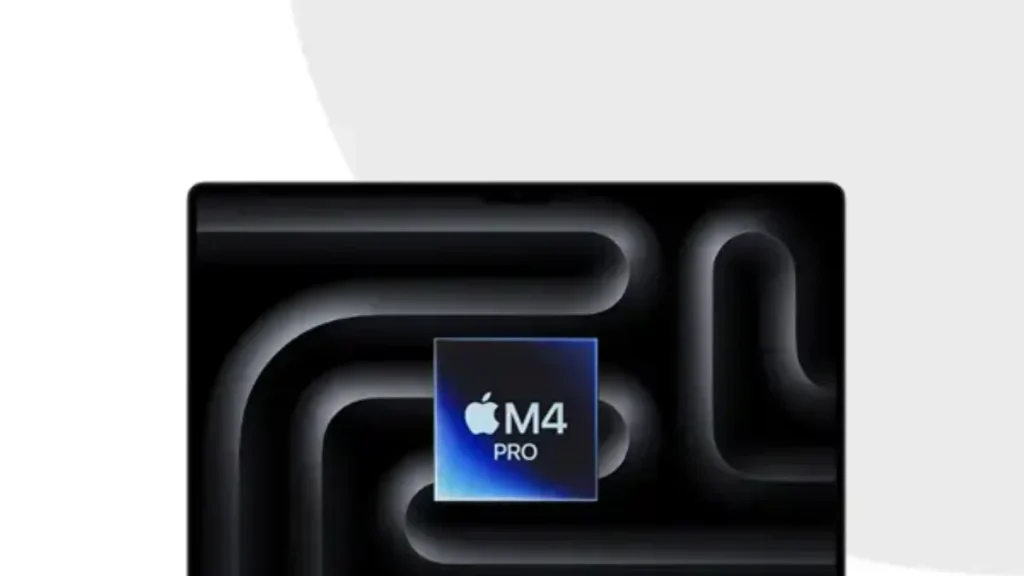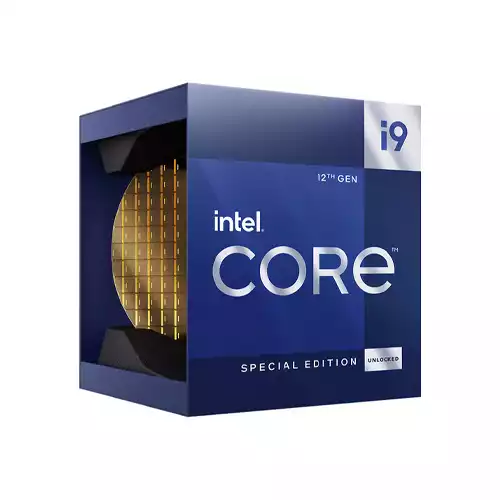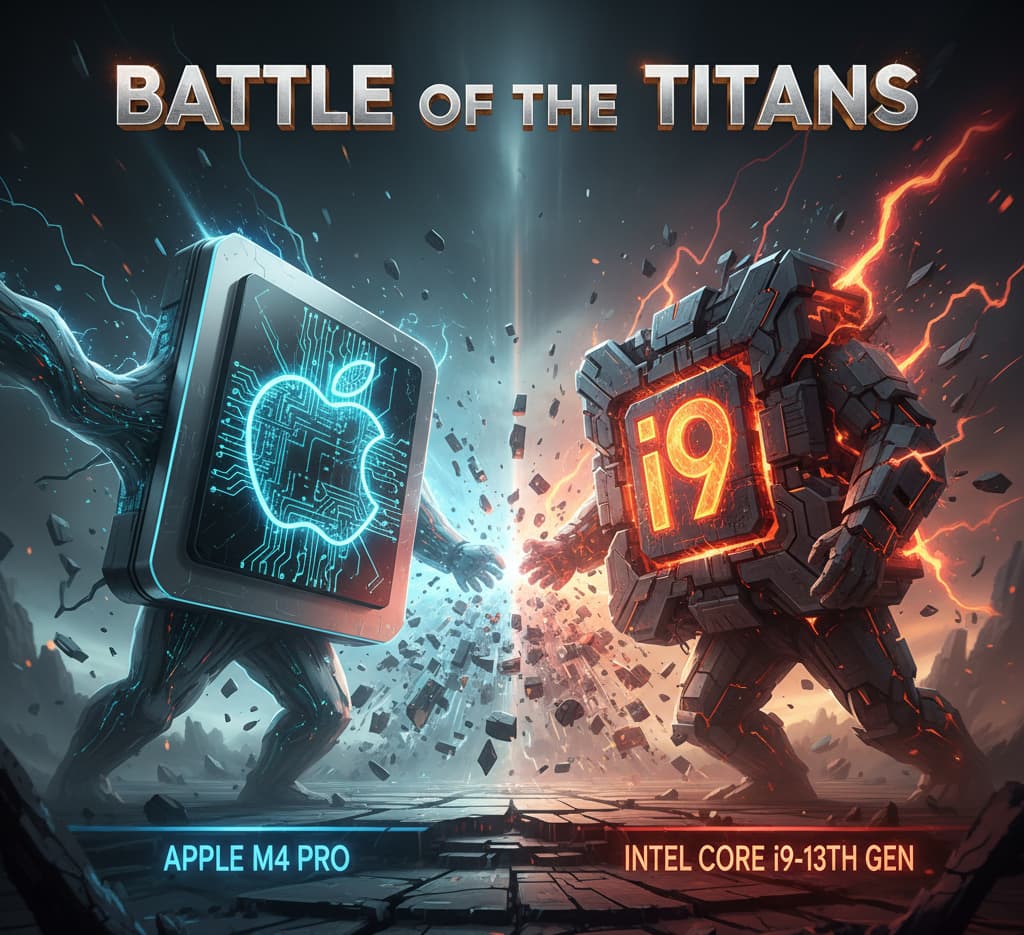Introduction
The landscape of high-performance computing has been significantly reshaped by Apple’s M-series chips and Intel’s 13th-generation Core processors. Among the most formidable contenders are the Apple M4 Pro and the Intel Core i9-13900K. This blog delves into a comprehensive comparison between these two processors, examining their performance, efficiency, and suitability for various computing needs.
Core Specifications
Apple M4 Pro (12-Core)

- Architecture: ARM-based, built on a 3nm process
- CPU: 12 cores (8 performance cores + 4 efficiency cores)
- GPU: 16-core integrated GPU
- Memory Support: Up to 64GB unified memory
- Power Efficiency: Optimized for low power consumption
- Integrated Graphics Performance: 7.4 TFLOPS
Intel Core i9-13900K

- Architecture: x86-based, built on a 10nm process
- CPU: 24 cores (8 performance cores + 16 efficiency cores)
- GPU: Intel UHD Graphics 770
- Memory Support: Up to 128GB DDR5 RAM
- Power Consumption: Higher TDP, requiring robust cooling solutions
- Integrated Graphics Performance: 0.8 TFLOPS
Performance Benchmarks
Single-Core Performance
In single-core tasks, the Apple M4 Pro demonstrates superior performance. Benchmark scores indicate that the M4 Pro outperforms the i9-13900K by approximately 31% in Geekbench 6 single-core tests. This advantage translates to faster processing of single-threaded applications and improved responsiveness in everyday tasks.
Multi-Core Performance
Despite the Intel i9-13900K’s higher core count, the Apple M4 Pro exhibits competitive multi-core performance. In Geekbench 6 multi-core tests, both processors deliver comparable results, with the M4 Pro slightly edging out the i9-13900K. This parity suggests that Apple’s architecture efficiently utilizes its cores, narrowing the performance gap between the two.
Graphics Performance
The Apple M4 Pro’s integrated 16-core GPU significantly outperforms the Intel UHD Graphics 770 found in the i9-13900K. With a performance of 7.4 TFLOPS compared to the i9’s 0.8 TFLOPS, the M4 Pro is better suited for graphics-intensive tasks such as video editing, 3D rendering, and gaming.
Power Efficiency
Apple’s M4 Pro is engineered for exceptional power efficiency. With a lower thermal design power (TDP), it offers longer battery life in laptops, making it ideal for mobile professionals and creatives. In contrast, the Intel i9-13900K, while powerful, consumes more power and generates more heat, necessitating advanced cooling solutions and impacting battery life in portable devices.
Use Case Suitability
Apple M4 Pro
- Best For: Creative professionals, developers, and users seeking seamless integration with macOS.
- Strengths: Superior single-core performance, integrated GPU for graphics tasks, exceptional power efficiency.
- Ideal Devices: MacBook Pro, Mac mini, iMac.
Intel Core i9-13900K
- Best For: Enthusiasts, gamers, and professionals requiring high multi-core performance.
- Strengths: High core count, robust performance in multi-threaded applications.
- Ideal Devices: High-end desktops, gaming PCs, workstations.
Conclusion
The choice between the Apple M4 Pro and the Intel Core i9-13900K hinges on specific user needs and preferences. The M4 Pro excels in power efficiency, single-core performance, and integrated graphics capabilities, making it a compelling choice for users within the Apple ecosystem. Conversely, the i9-13900K offers higher core counts and multi-threaded performance, catering to users requiring raw processing power for demanding applications.
Ultimately, both processors represent the pinnacle of their respective architectures, and the decision should align with the user’s specific computing requirements and ecosystem preferences.



